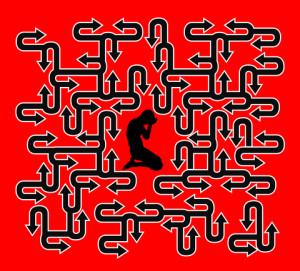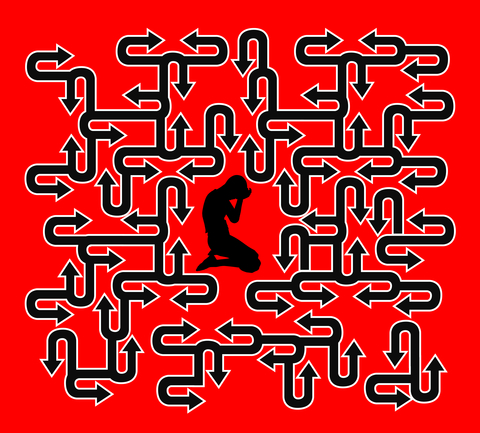
In a five-minute video, “Stop the Psych Drugging of Children—Now!, Dr. Peter Breggin made some alarming statements about the consequences of several decades of giving children psychiatric drugs. He said we have parents who believe their children are incorrigible. And we have children who grow up thinking they are defective and need psychiatric drugs. Many of the children who started out with a mere ADHD diagnosis when they were younger are growing up to be “career mental patients, taking multiple psychiatric drugs.” In an article he published in the journal Children & Society, Breggin reviewed in more detail many of the concerns he just touched on in his video. Here, I want to look at the growing problem of using antipsychotics with children.
Mad in America reported that a study published in JAMA Psychiatry indicated that the majority of children, adolescents and young adults who are prescribed antipsychotic medications have not been diagnosed with a mental disorder. “Most of the younger children (60.0%), older children (56.7%), adolescents (62.0%), and young adults (67.1%) treated with antipsychotics had no outpatient or inpatient claim that included a mental disorder diagnosis.” Among the children who do have a diagnosis for a mental disorder, many of them are being prescribed antipsychotics off label.
In other words, while antipsychotics are only approved to treat children diagnosed with schizophrenia and bipolar disorder, children with diagnoses like ADHD are being given these powerful drugs to “treat” their behavior problems. In addition, very few of the children receiving antipsychotics also receive psychotherapeutic care. Mark Olfson, the lead author of the study said:
Relatively few of these young people are receiving psychotherapy. We may need to put greater effort into increasing access to psychosocial interventions that can treat symptoms and behaviors that are currently being addressed with antipsychotic medications.
In the same issue of JAMA Psychiatry in which the Olfson et al. article was published, Drs. Carroll and Blader acknowledged in “Antipsychotic Use in Youth Without Psychosis” that the use of antipsychotic medications has been increasing since the mid-1990s. They added this pattern was most pronounced in the U.S. They affirmed evidence suggests that second-generation antipsychotic use was chiefly with children with aggression and behavioral problems, ADHD, and disruptive behavior disorders. “Although antipsychotics are clearly effective for aggressive behaviors … other interventions with lower adverse effect burdens, when implemented adequately, can avert the need for antipsychotic treatment.”
Reporting for the StarTribune, Gail Rosenblum noted that in 2014 20,000 prescriptions for antipsychotic medications were written for children 2 and younger. According to IMS Health, a healthcare data company, that was a 50% increase over the year before. Turn to the article to see a photo of a child playing with Lego-like blocks branded with “Risperdal” at a pediatrician’s office.
IMS found that at least 10,000 children, ages 2 and 3, were prescribed medications such as Adderall to treat attention deficit hyperactivity disorder (ADHD). The protocol falls outside of American Academy of Pediatrics guidelines. Children younger than age 2 received prescriptions for risperidone (commonly known as Risperdal), quetiapine (Seroquel) and the antidepressant Prozac.
In his Children & Society article, Dr. Breggin noted where the so-called second-generation antipsychotics cause the same adverse effects as the older antipsychotics. These adverse effects include: “lobotomy-like indifference and apathy, Parkinsonian symptoms, akathisia, dystonia, tardive dyskinesia, neuroleptic malignant syndrome, gynecomastia [enlarged breasts in men] and other sexual dysfunctions.” Tardive dyskinesia (TD), a movement disorder caused by antipsychotic drugs, is a major threat to children, according to Breggin. TD can effect any muscle functions that are wholly or partially under voluntary control. That includes the face, eyes, tongue, jaw, neck, back, abdomen, and more. Here are two videos of what TD looks like in a child. The first is a girl after she stopped taking her medications, presumably because of the TD. The second one is of another young girl trying to fall asleep.
Even ‘mild’ cases of eye blinking or grimacing can humiliate, stigmatize and isolate a child. More severe cases disable children with painful spasms in the neck and shoulders, abnormal posture and gait, or constant agitated body movements.
Additional concerns with the newer antipsychotics include a potential predisposition to heart disease and early death; weight gain and obesity; elevated blood sugar and diabetes; elevated blood lipids and atherosclerosis, and high blood pressure.
The New York Times published an article by Alan Schwartz, that looked at the growing practice of giving antipsychotics to children under the age of 2. His introductory case illustration was a boy who was first prescribed the antipsychotic Risperdal when he was 18 months of age. His mother indicated that she was never told of the potential risks to her son with Risperdal. “It was just ‘Take this, no big deal,’ like they were Tic Tacs,” said Genesis Rios. The prescribing doctor declined to be interviewed by the NYT.
Cases like that of Andrew Rios, in which children age 2 or younger are prescribed psychiatric medications to address alarmingly violent or withdrawn behavior, are rising rapidly, data shows. Many doctors worry that these drugs, designed for adults and only warily accepted for certain school-age youngsters, are being used to treat children still in cribs despite no published research into their effectiveness and potential health risks for children so young.
Schwartz reported that almost 20,000 prescriptions for antipsychotics such as risperidone (Risperdal) were written for children 2 years old and younger in 2014. This was a 50% jump from the year before. As a side note, prescriptions for the antidepressant fluoxetine (Prozac) rose 23 percent in one year for the same age group. A dozen experts in child psychiatry had never heard of children younger than 3 getting such medication and had difficulty explaining a reason for it. Dr. Martin Drell, a former president of the American Academy of Child and Adolescent Psychiatry said he was “hard pressed to figure out what the rationale would be.” Dr. Ed Tronick, a professor of developmental and brain sciences at the University of Massachusetts said:
I think you simply cannot make anything close to a diagnosis of these types of disorders in children of that age. . . . There’s this very narrow range of what people think the prototype child should look like. Deviations from that lead them to seek out interventions like these. I think it’s just nuts.
The American Academy of Pediatrics and the American Academy of Child and Adolescent Psychiatry have not taken a stand for or against the practice. They have no guidelines or position statements on the use of antidepressant or antipsychotics with children younger than 3. One possible factor in their silence is there are no formal trials in infants and toddlers with these medications. Dr. Mary Gleason a pediatrician and child psychiatrist at Tulane University School of Medicine said children with ages measured in months have brains whose neurological development was occurring at too rapid of a rate—and in still unknown ways—to risk using medications that could profoundly influence that growth. “There are no studies … and I’m not pushing for them,” said Dr. Gleason.
In an article for Psychiatric Services, psychiatrists at Dartmouth expressed concern about the increasing numbers of children being prescribed antipsychotic medications. In an article summarizing the concerns of the authors, Mad in America quoted them as saying:
The crux of the issue is this: Children in the United States have increasingly been prescribed antipsychotic medications despite potentially serious short- and long-term side effects. . . . Yet other efficacious and safer interventions are available. . . . We should be concerned about overuse of antipsychotics for many reasons. Children are inherently vulnerable because their brains and bodies are still developing and may be permanently altered by powerful medications. . . . Their disruptive behaviors are often related to disruptive parenting and stressful environments, which deserve primary attention. Adults may be motivated by the desire to achieve short-term control of behavior rather than to enhance children’s long-term growth and development.
Daviss et al. recommended five changes to reduce the use of antipsychotics in children. First, there is a need for preventive care that addresses socioenvironmental problems. Second, mental health professionals need to become more aware of the dangers of using antipsychotics in children as well as the availability of evidence-based therapies and interventions. Third, clinical guidelines need to be developed along with steps to ensure compliance with those guidelines. Fourth, there should be shared decision making when treating children with these medications. “Clinicians, patients, and parents all need better information on antipsychotics and should all be involved in deciding on appropriate treatment methods.” And fifth, education programs regarding these concerns are needed to reach the agencies and counselors who take care of and support vulnerable children.
Dr. Gleason commented that people are trying to do the best they can with the tools available to them. “There’s a sense of desperation with families of children who are suffering, and the tool that most providers have is the prescription pad.” These children and families deserve better than a choice between trying to cope with the behaviors they see their child struggle with, and using a chemical straitjacket with the potential of long-term cognitive and physiological harm.





